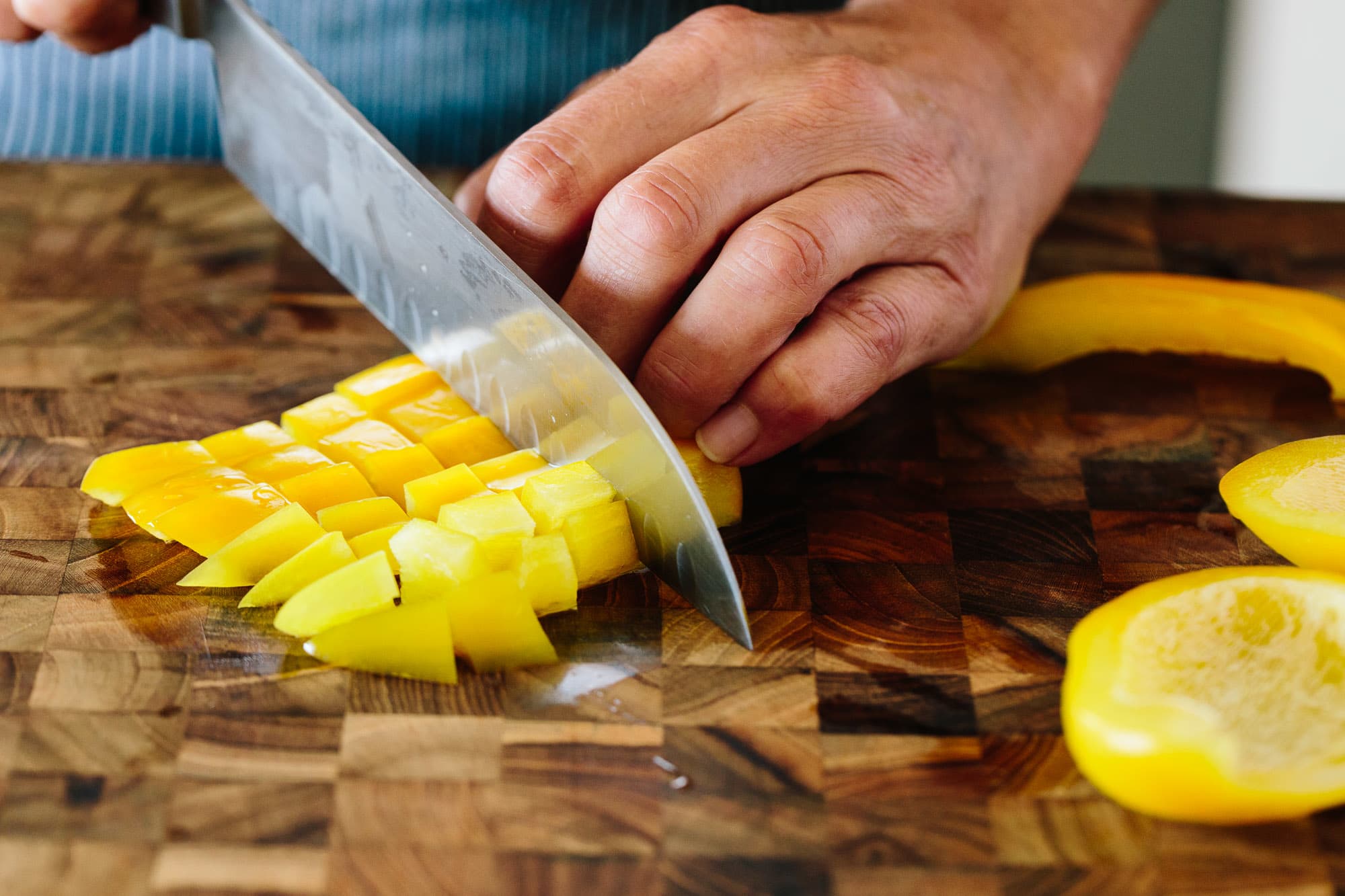Are you ready to dive into the world of creating your own butcher block cutting board? Whether you're a seasoned kitchen professional or someone new to the art of culinary craftsmanship, assembling a butcher block yourself can be a truly life-changing experience. But why would you even consider such a project?
Butcher block cutting boards are not only practical but also stunningly beautiful and durable additions to any kitchen. Plus, constructing one on your own gives you the remarkable opportunity to personalize it to your exact needs and wants. If you're intrigued and ready to try something new, you're in for an unmissable treat.
:max_bytes(150000):strip_icc()/prevent-cutting-board-slipping-1123-c9837c7f958745b792c2b115c7d7bccd.jpg)
Big Reasons to Consider Making Your Own Butcher Block
Before diving into the process of how to make a butcher block cutting board, it's critical to understand why this endeavor is worth your time. For starters, the benefits go beyond just having a durable surface to chop and prepare food. Here are some shocking reasons to embark on this DIY project:
- Customization: Choose the wood type, size, and design to meet your kitchen's style.
- Durability: Homemade butcher blocks often last longer than the factory-made options if built correctly.
- Eco-Friendly: Opting for quality, sustainable wood ensures you're reducing environmental impact.
Creating a butcher block cutting board offers culinary professionals a unique blend of functionality and style. It's the ideal hands-on project for those seeking a deeper connection to their tools of the trade.
Materials You'll Need for a Terrific Butcher Block
Ready to get started? The first step in understanding how to make a butcher block cutting board is gathering all the materials you'll need. Be prepared to invest in quality supplies to get the best results.
Hardwoods Approved for Butcher Blocks
Wood selection plays a big role in the quality and performance of your cutting board. Certain types of wood are stronger and more resistant to wear, making them ideal for this purpose:
- Maple: A classic choice known for its durability and shock resistance.
- Walnut: Famous for its rich, dark tones.
- Cherry: A softer option that adds a warm red hue.
Make sure that whichever wood you choose is food-safe, untreated, and kiln-dried. Avoid softwoods like pine or spruce as these are prone to dings and scratches.
If you want to explore different wood options for other kitchen tools, check out this article on plastic cutting boards uses.
Additional Supplies
Aside from wood slabs, you'll need:
- Wood glue (make sure it's non-toxic and waterproof)
- Clamps to hold pieces together
- Sandpaper (start with coarse grit and finish with a finer grit)
- Mineral oil for sealing and finishing
- Saw for cutting to size
For more information about oils beneficial for finishing wooden kitchen tools, you can read this guide to soybean oil.
Steps on How to Make a Butcher Block Cutting Board
Let's jump into the life-changing process of crafting your very own butcher block cutting board! Below are the steps you need to follow:
Step 1: Plan and Measure
The first step is deciding the size and thickness of the board. For chefs, larger boards make fantastic workstations. Use a tape measure to ensure precise calculations. Sketch your design before cutting.
Step 2: Cut Your Wood
Use a saw to cut the wood into strips of the desired size. For end-grain butcher blocks (the most durable type), you'll need to cut shorter blocks of uniform size.
Step 3: Glue Them Together
Align your wood pieces on a flat surface and spread a thin layer of glue on one side of each piece. Press them together tightly. You'll need clamps to secure the boards together until the glue sets. Allow at least 24 hours for drying.
Step 4: Sand and Finish
Once the glue has dried, use sandpaper to smooth out any uneven edges. Gradually move to finer grits to get a polished finish.
Apply food-safe mineral oil to seal and protect the wood. This step enhances the board's natural beauty and makes it water-resistant.
Maintaining Your Masterpiece
Once you've built your dream butcher block, maintaining it becomes your top priority. Poor upkeep could diminish its usefulness over time. Keep the following maintenance tips in mind:
- Clean the board immediately after use with warm water and mild soap.
- Never immerse the butcher block in water for extended periods.
- Oil the board monthly using food-safe oils to preserve its shine.
For additional tips on wooden cutting board care, visit Real Simple's cleaning guide.

FAQ
What is the best wood for making a butcher block?
Hardwoods like maple, walnut, and cherry are ideal due to their durability and food-safe properties.
Can I use kitchen oils for sealing my cutting board?
Its best to use food-safe mineral oil. Avoid oils like olive oil, which can become rancid over time.
How often should I oil my butcher block cutting board?
Oiling should be done monthly or whenever the surface begins to feel dry.
Now that you know how to make a butcher block cutting board, embrace your creativity and give it a try. It's herethe chance to craft a tremendous and remarkable addition to your culinary workspace awaits!
For more kitchen-related tips and tricks, check out this blog on seasoning cookware.
This article contains affiliate links. We may earn a commission at no extra cost to you.





Leave a comment
This site is protected by hCaptcha and the hCaptcha Privacy Policy and Terms of Service apply.